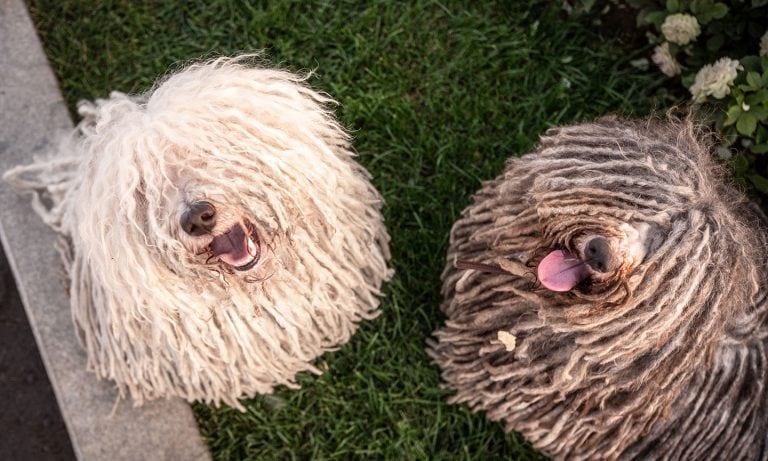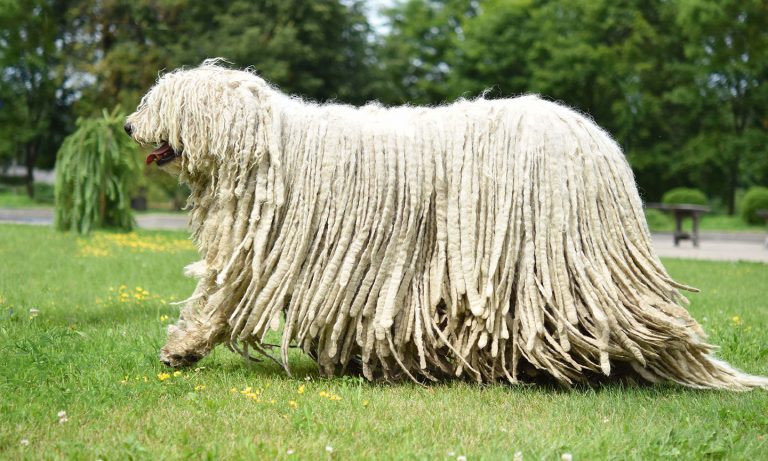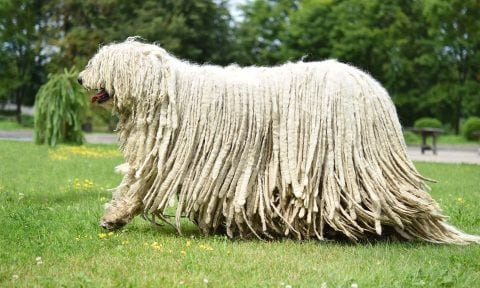Puli vs Komondor

Breed Snapshot
Best For
Puli dogs are intelligent and playful pups who require daily grooming and lots of exercise. They thrive in spacious homes with active and experienced pet parents, even those with dog allergies—this breed is considered...
Puli dogs are intelligent and playful pups who require daily grooming and lots of exercise. They thrive in spacious homes with active and experienced pet parents, even those with dog allergies—this breed is considered hypoallergenic.
Puli Temperament
Just like you, the Puli is one of a kind. With their unmistakable long cords (which people sometimes mistake for dreadlocks), a fun-loving but sometimes ornery attitude and eager-to-please personality, Pulik are loyal dogs who live for fun with their favorite human (that’s you!). The Puli breed has its roots in Hungarian shee...
Just like you, the Puli is one of a kind. With their unmistakable long cords (which people sometimes mistake for dreadlocks), a fun-loving but sometimes ornery attitude and eager-to-please personality, Pulik are loyal dogs who live for fun with their favorite human (that’s you!).
The Puli breed has its roots in Hungarian sheepherding, and today, the herding instinct remains strong. That means early socialization and basic obedience training (skills like sit, stay and come) are essential to raising a confident adult Puli dog. This intelligent breed loves using their brains, so they’re also happy to learn advanced skills.
Though strong-willed, thanks to being bred to work independently, Pulik are dedicated to their family. They are naturally protective and can be wary of strangers, which makes them good guarding dogs. However, they generally get along well with people (once they get to know them) and other dogs. The downside to having the long corded fur is that when it covers their eyes and disguises the tail and ears of the Puli, it can be difficult for other dogs to read their body language—the primary way dogs communicate. If only dogs could pass notes to each other. (“I like you, do you like me? Check a box: Yes or No.”)
A Puli dog can live with a cat; it helps if they grow up together and pet parents set boundaries to prevent the dog from giving into their herding instincts and chasing the cat. Same with young children—your Puli may try to keep your children from straying too far away or wandering around the house, but training can help. Children in your Puli’s life should also be taught to play respectfully with dogs.
Pulik need a lot of mental and physical stimulation—no couch potatoes allowed, and don’t be stingy with the walks, either! Long walks, puzzle toys in the house, or an agility or herding dog class will keep your Puli satisfied and help them put their best paw forward daily.
Puli Traits

Breed Snapshot
Best For
The Komondor is a unique Hungarian livestock guardian dog with a distinctive corded coat. They require experienced handling, early socialization and plenty of space to roam. Potential pet parents should be prepared for their independent...
The Komondor is a unique Hungarian livestock guardian dog with a distinctive corded coat. They require experienced handling, early socialization and plenty of space to roam. Potential pet parents should be prepared for their independent nature and grooming needs.
Komondor Temperament
Komondor dogs generally have a calm and quiet temperament, but they will react when they sense strange things are afoot, and that’s usually in the form of a deep, loud bark. Bred in Hungary as a flock guardian, they are devoted to their family and tend to be war...
Komondor dogs generally have a calm and quiet temperament, but they will react when they sense strange things are afoot, and that’s usually in the form of a deep, loud bark. Bred in Hungary as a flock guardian, they are devoted to their family and tend to be wary of strangers.
Komondor dogs need to be properly trained and socialized. It’s important to remember that, out in the fields, these dogs were largely left to their own devices when herding sheep. Over time, the Komondor breed developed a strong sense of independence.
When properly socialized, Komondorok can do well with kids and other pets. However, without proper training, they can be reactive toward dogs they don’t know, so trips to the dog park may not be a good idea. (Learn more about training and socialization below in the Training section.)
Like most working dogs, Komondorok need something constructive to do. Without daily exercise or mental stimulation to keep them occupied, you may not be happy with the outcome as these large dogs can be destructive when bored.




